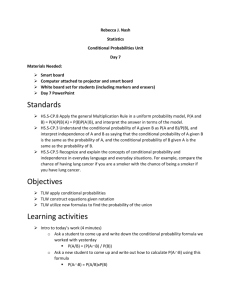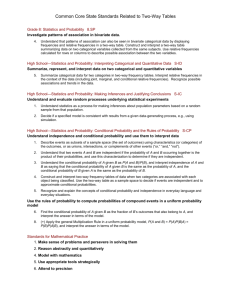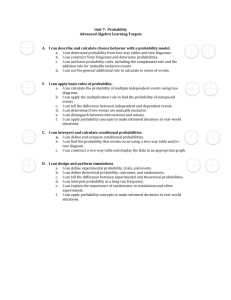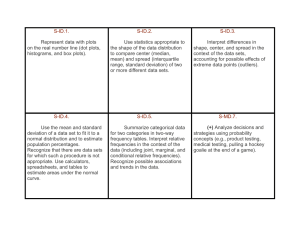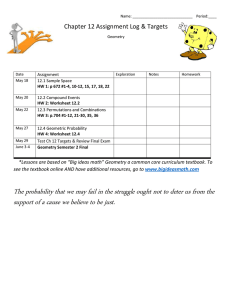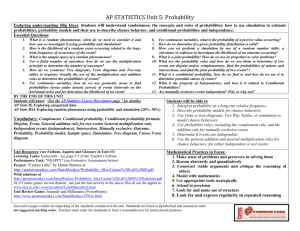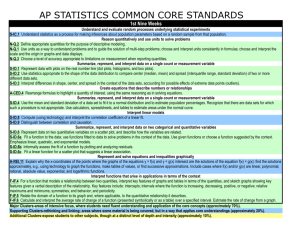File - Nash, Rebecca
advertisement
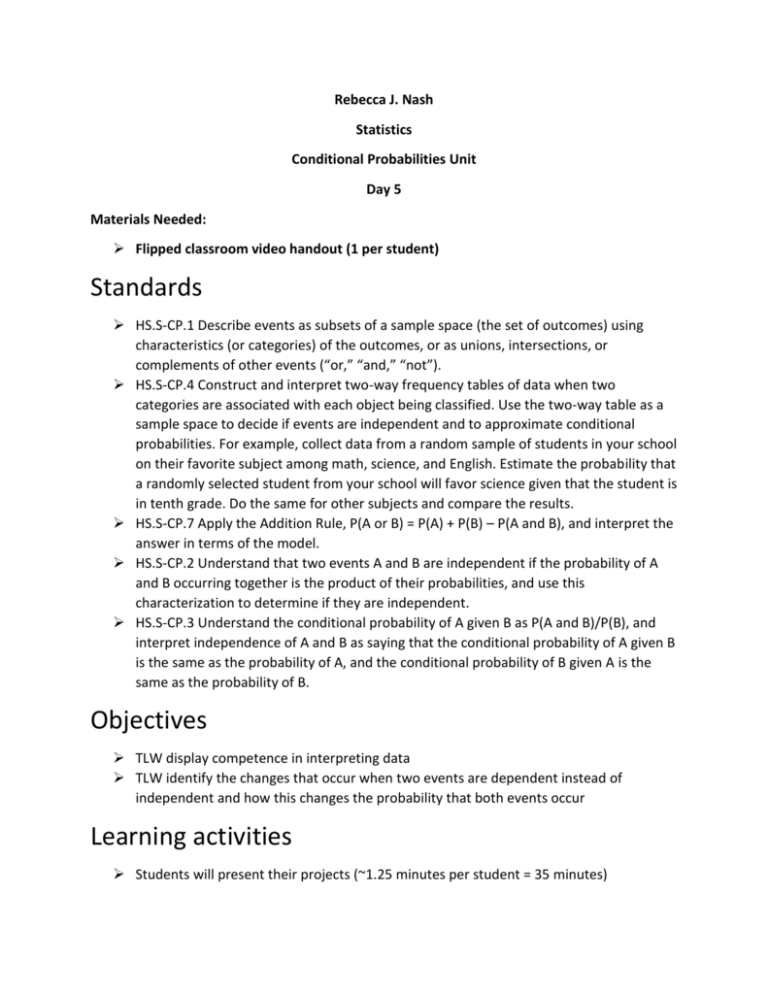
Rebecca J. Nash Statistics Conditional Probabilities Unit Day 5 Materials Needed: Flipped classroom video handout (1 per student) Standards HS.S-CP.1 Describe events as subsets of a sample space (the set of outcomes) using characteristics (or categories) of the outcomes, or as unions, intersections, or complements of other events (“or,” “and,” “not”). HS.S-CP.4 Construct and interpret two-way frequency tables of data when two categories are associated with each object being classified. Use the two-way table as a sample space to decide if events are independent and to approximate conditional probabilities. For example, collect data from a random sample of students in your school on their favorite subject among math, science, and English. Estimate the probability that a randomly selected student from your school will favor science given that the student is in tenth grade. Do the same for other subjects and compare the results. HS.S-CP.7 Apply the Addition Rule, P(A or B) = P(A) + P(B) – P(A and B), and interpret the answer in terms of the model. HS.S-CP.2 Understand that two events A and B are independent if the probability of A and B occurring together is the product of their probabilities, and use this characterization to determine if they are independent. HS.S-CP.3 Understand the conditional probability of A given B as P(A and B)/P(B), and interpret independence of A and B as saying that the conditional probability of A given B is the same as the probability of A, and the conditional probability of B given A is the same as the probability of B. Objectives TLW display competence in interpreting data TLW identify the changes that occur when two events are dependent instead of independent and how this changes the probability that both events occur Learning activities Students will present their projects (~1.25 minutes per student = 35 minutes) The teacher will refresh students on the pre-assessment workstations of rolling two dice and recording sums and then the racing game. The teacher will ask students what they discovered in these workstations (5 minutes) o The sum can’t be 1 o It is not equally likely to be any number Write out addition table to show how often each sum is found (4 minutes) o Ask students which numbers are the best to pick for the racing game Explain how this table can help with a conditional probability problem (3 minutes) o E.g. if we roll either a 5 or a 7 on the first roll, what is the probability that our sum will be ten or eleven. We can highlight the rows of 5 and 7 and then pick the values of ten and eleven out of them and count the values of 10 and 11 over the total amount in the highlighted rows. Hand out website handout and explain homework assignment for students to watch videos on conditional probability, and come to class prepared tomorrow with either questions on the subject or a full grasp of the subject. (3 minutes) Assessment Assessed on day 6 and later Reflection
